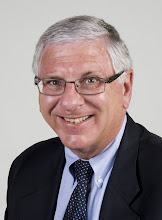EVERY month, Susan Crisp takes her eight-year-old son, Daniel, for a 15-minute chiropractic treatment.
Daniel has autism and Susan and her husband, Gary, firmly believe that this complementary therapy has been key to the recent improvements they've seen in his development. "His communication has improved tremendously," says Susan. ..
Television presenter, Quentin Willson, has reported similar success from the treatment for his son, Max.
Indeed, it was after seeing Quentin talking about his son on TV two years ago that Susan first got the idea to try chiropractic for Daniel.
"It was a coincidence that I saw it. I had the TV on and it really caught my eye because there were so many similarities between what he was talking about with his son and Daniel," she remembers…
"We thought, `If nothing happens, that's the worst that can happen'.
"At the time, Daniel was walking on his tip-toes and his feet were pointing inwards when he walked - which can be symptoms of autism. I was worried about it and we thought that the chiropractic might be able to help with his posture."
Susan took Daniel to see chiropractor Doug Clark at Dynamic Chiropractic in Sale. Chiropractic is a complementary therapy used to treat problems with joints, bones and muscles and the effects these have on the nervous system.
This is done by a chiropractor, using their hands to make often gentle, specific adjustments to joints, concentrating particularly on the spine, to improve the nervous system and release the body's natural healing ability.
Doug explains: "Daniel demonstrated quite striking spinal stiffness both in the left side of his lower back and his upper neck.
"From a chiropractic point of view, spinal movement problems, typically at the top of the neck, may contribute to distorted nerve function in the central nervous system.
Brain effects
"Typically, the left side of the upper neck communicates with the right side of the frontal brain and with the parts of the brain cortex that is involved with speech and language and co-ordination of movement.
"Whilst I treated Daniel's spine for mechanical problems, which we could be certain would benefit his health, we didn't know at this stage how his communication skills, speech and language might respond to treatment."
Initially, Daniel's treatment was once a week for the first month. This reduced to once a fortnight and now Daniel sees Doug once a month.
"Some parts of the treatment look uncomfortable, but it doesn't hurt Daniel at all," says mum, Susan.
"He loves it. Usually when Daniel comes in from school, that's it, he's in and it's really hard to get him to go anywhere, but when I say we are going to see Doug he wants to go.
"Every time Doug has a little chat to ask how Daniel has been getting on. Then Daniel sits in the chair - we call it the Thunderbird chair, and Doug doesn't have to tell him anything now, he knows what to do.
No bother
"Doug manipulates Daniel's neck. This part looks uncomfortable but Daniel smiles and mimics the clicking sound his neck makes when he has it done.
"After this Daniel lies flat on his tummy and Doug manipulates his spine in different ways. He finishes the treatment by massaging the back of his neck.
"Daniel loves this but when I've tried to do it at home he won't let me do it, only Doug - they've built up a really lovely relationship.
"But it's not just a matter of Daniel enjoying it. Within four to six weeks we noticed a huge improvement in his condition.
"We took him in June and by August people who don't see him regularly commented that his speech had come on tremendously. He started to initiate sentences - it was a real surprise, to us."
Daniel continues to make excellent progress and is now speaking and engaging with people on a regular basis.
As well as his chiropractic treatment he receives educational help through a specialist school, which includes seeing a speech therapist twice a week…
To see complete article:
http://www.manchestereveningnews.co.uk/lifestyle/health_and_beauty/health_and_beauty_feature/s/1013/1013378_alternative_cures_for_autism.html
Saturday, August 18, 2007
Subscribe to:
Post Comments (Atom)


2 comments:
The Chiropractic profession is heavily regulated in the United States and Canada, but the terminology of what a Chiropractor is called can vary in each area. In Washington State the typical terms are Doctor of Chiropractic or Chiropractor, but some states insist on the name Chiropractic Physician.
Chiropractic Clinic
Research has shown not only that the developing brain relies on normal structural integrity and joint movement, but that complex neurochemical communication and pathways involved in helping humans to “feel good” are tied into spinal biomechanics and their related neurological pathways.
Eva Jenkins
Post a Comment